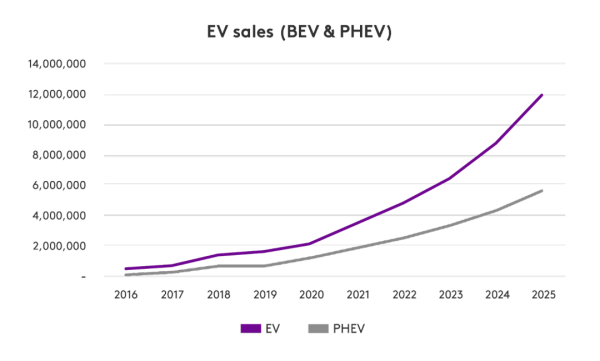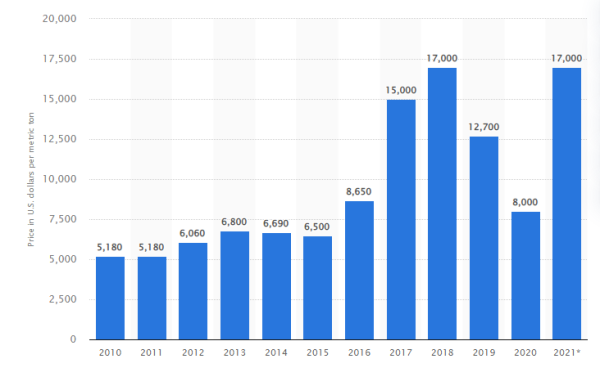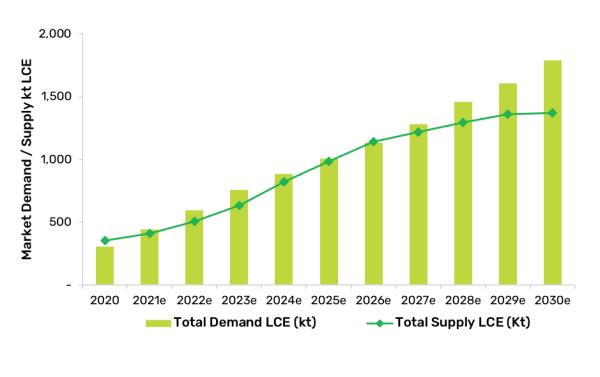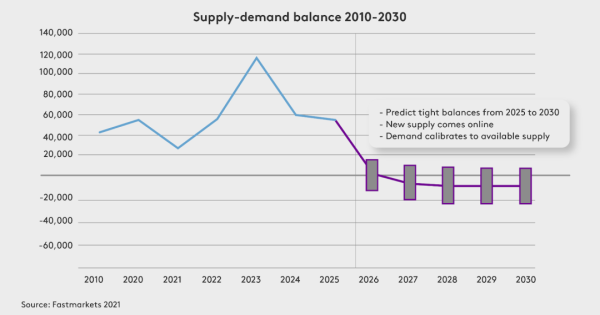Lithium is a soft silvery white alkali metal with high reactivity, extremely light and low density. Although it has various applications throughout the history, in recent years, it has become a key component of lithium-ion ("lithium-ion") batteries due to its reactivity, portability and charging capacity.
One of the end uses of lithium is lithium-ion batteries. Lithium ion batteries are rechargeable and are mainly used in portable electronic products and electric vehicles. In the lithium-ion battery, the lithium ion moves from the negative pole to the positive pole during use, while the opposite is true during charging. These batteries are highly flammable, but low maintenance costs. They have high energy density and low self-discharge. Some disadvantages include their high manufacturing cost, and they need to protect the circuit to maintain the voltage safely. Lithium ion battery is also a large single terminal use of lithium.
With the response of global auto companies, policies and consumer sentiment have promoted the use of index-level electric vehicles. In December 2021, China's monthly sales of electric vehicles hit a new record of 502545, an increase of 125% since January 2020. BMW continued to achieve rapid electronization and delivered 97000 plug-in electric vehicles in the fourth quarter of 2021 (a year-on-year increase of 29.6%).

Figure 1-Estimated sales volume of electric vehicles
Figure 1 shows the expected growth of global electric vehicle sales by 2025. It is estimated that the battery cathode of standard electric vehicles needs 17.6 pounds of lithium, so the potential demand for lithium is expected to be in direct proportion to these estimated sales figures of electric vehicles.
The consensus of industry experts is that due to the increasing penetration of electric vehicles (EV) and the popularity of renewable energy, the demand for lithium will increase significantly in the next few years, which will lead to the increase and storage of battery storage demand for a large number of consumer goods.
As the key raw material of battery, lithium price is responding.

Figure 2 2010-2021 Lithium carbonate price trend chart
It can be seen from the above figure that the average price of battery grade lithium carbonate in 2021 is estimated to be 17000 dollars per metric ton. As in 2018, this is the highest figure in the past decade.
In 2021, the price of technical and battery grade lithium carbonate will rise by 188.9% and 215% respectively. Most countries have begun to develop a route to phase out fossil fuel vehicles and shift to zero emission vehicles, such as pure electric vehicles and fuel cell electric vehicles (FCEV). Although FCEV will be powered by green hydrogen, which will require the use of large amounts of platinum in hydrogen proton exchange membrane fuel cells, battery-driven EVs will continue to use lithium batteries. It is expected that demand will continue to rise as global automakers continue to introduce more electric vehicle models.
Looking ahead, lithium demand is expected to double in the second half of this century and exceed 2 million tons by 2030. This growth will be mainly driven by the demand for lithium-ion batteries for electric vehicles. It is expected that China's demand will remain at a high level and will continue to account for half of the global demand for lithium-ion batteries.
As the demand surge is expected to continue, S&P predicts that the global lithium production in 2022 will increase by 55% compared with 2020.

Figure 3 Global lithium supply and demand
The challenge of the world is to supply enough lithium to the market. Australia and Chile are major lithium exporters, and Afghanistan also has huge lithium reserves. However, the original equipment manufacturers in North America may prefer the local source of this mineral, and it is unlikely that the current Afghan regime is organized in order to supply lithium to the global market.

Figure 4 Lithium supply and demand balance
Figure 4 shows that the supply side shortage is expected to increase gradually by 2030. So, how will the market correct this supply shortage? In 2020, 345000 tons of lithium will be produced and processed, mainly from the lithium triangle in South America and Australia. Lithium production must quadruple between 2020 and 2030 to meet the growing demand, from 345000 tons in 2020 to 2 million tons in 2030. This will require new lithium production line to meet this demand.